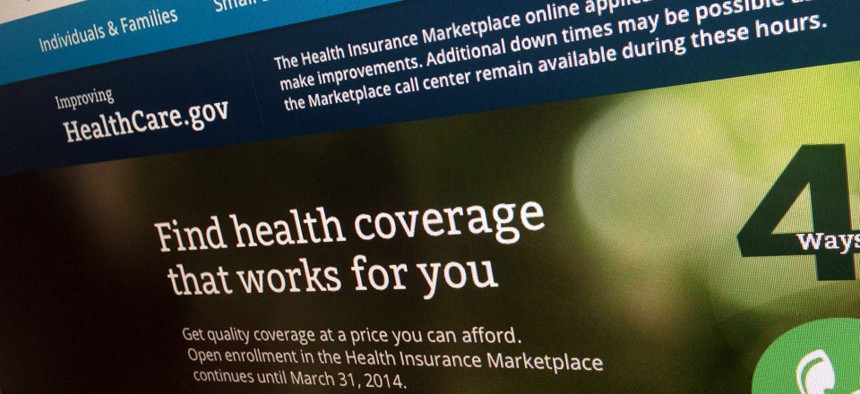Where Obamacare Is and Isn't Working and Why
The single greatest predictor for where the healthcare law's exchanges are successful? Which party controls the state government.
For Obamacare, the distance between success and failure is as short as a step across state lines.
Two months before the close of the Obamacare open-enrollment period, exchanges in some states are picking up high portions of eligible members, according to new analysis by the nonpartisan Kaiser Family Foundation. But elsewhere, the exchanges are flailing.
The foundation found that 7.8 percent of the marketplace-eligible population in the U.S. have enrolled in coverage thus far. Thirty-three states have enrolled a lower percentage than nationally, while 17 plus D.C. have enrolled a higher percentage.

Those eligible for marketplace coverage are not limited to the uninsured; they include those who purchase coverage on their own in the individual market as well. People who are offered coverage through their employer, or who are eligible for Medicaid, Medicare, or other public-health programs, are not considered eligible for insurance through the marketplace.
The biggest factor in enrollment success or failure? Political affiliation.

States that opted to run their own exchanges tend to have made more progress enrolling their eligible residents. Those states did not have enrollment stalled by the rocky first two months of Healthcare.gov, and tend to be more receptive to the law and more aggressive in outreach and enrollment efforts.

Several states are held up as ones that have embraced and succeeded at implementation of the Affordable Care Act, and as such, have relatively high percentages enrolled—for example, California (15.2 percent), Kentucky (11 percent), New York (12.4 percent), and Connecticut (16.7 percent).
States that have not—including Texas (3.8 percent), South Dakota (2.7 percent), Florida (6.2 percent)—are homes to exchanges where enrollment is gossamer-thin.
Texas has the highest uninsured rate among all states, but one of the lowest percentages enrolled. California, meanwhile, has the highest number of residents eligible for enrollment, and also the highest number enrolled.
On the flip side, Vermont (33.4 percent) and Washington (28.3 percent) have enrollment percentages that are around twice as high as the next-highest state. Both have done a significant amount of enrollment outreach, and being a smaller state has likely helped Vermont reach more residents. Washington has a very well-functioning website and an organized and well-funded consumer assistance program in place, says KFF State Reform Director Jennifer Tolbert, who produced this data.
Perhaps the biggest surprise, according to Tolbert, is North Carolina. The governor is opposed to the health law and the state is using the federally facilitated marketplace. It has also opted out of Medicaid expansion. Yet North Carolina has successfully enrolled 10 percent of the eligible population, the 11th-highest of all states. Tolbert hears those on the ground are doing a very effective job providing outreach and enrollment assistance, but says more investigation is needed.
Its important to remember that two months still remain before the final March 31 deadline, and enrollment is expected to surge ahead as the date nears. As states continue their efforts and change strategies, these numbers are likely to shift.
Massachusetts is another oddity: The state has the lowest percentage of eligible population enrolled, a seeming surprise for a state that is both running its own exchange and expanding Medicaid. However, there are two probable explanations for this, according to Tolbert.
The first is that the Massachusetts enrollment website has experienced significant problems. Second, the state's eligible population includes people who are enrolled in coverage, and Tolbert says such people likely amount to a larger portion of Massachusetts residents because the state has been living under an ACA-style system for nearly a decade.
"My guess is that most of these people are currently covered and will remain so until they get the site fixed; then most will shift over automatically," she says. "A higher percentage [of the eligible marketplace population] in Massachusetts is purchasing coverage on their own, because it's more affordable." In Texas, she notes, these affordable coverage options don't exist, so a greater portion of the eligible population is currently uninsured.
NEXT STORY: Navy Official Could Be New NSA Chief



